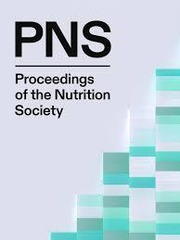No CrossRef data available.
Article contents
Validation of a 4-day eNutri food frequency questionnaire (FFQ) against controlled dietary intake – preliminary findings from the SODIAT-1 study
Published online by Cambridge University Press: 09 October 2025
Abstract
Accurate dietary assessment is crucial for effective public health strategies, yet there are challenges with current methods(1). The ‘Standardised and Objective Dietary Intake Assessment Tool’ (SODIAT)-1 study aimed to assess the effectiveness of a combination of emerging objective and self-report measures to more accurately monitor dietary intake(2). For this study, eNutri, a web-based food frequency questionnaire (FFQ) from the University of Reading, was adapted to assess intake over four days instead of its usual four weeks(3). This analysis aimed to evaluate dietary intakes recorded by eNutri against the known intakes of two 4-day highly-controlled diets and evaluate eNutri’s usability.
This randomised controlled crossover trial recruited 33 UK adults (aged 18-70 years, BMI 20-30kg/m2). Within the clinical units at the University of Reading and Hammersmith Hospital, participants consumed two 4-day controlled diets (non-compliant/compliant with UK guidelines, Diet A/B, respectively) in a randomly-allocated order, with at least one- week washout between diets. Dietary intake was self-reported using eNutri at the end of day 4, for each test period. After first use of eNutri, participants completed the System Usability Scale (SUS) (higher scores represent greater usability, with scores >70 classified as “acceptable” (4)), and rated the overall user-friendliness on a scale from “1: worst imaginable” to “7: best imaginable”. Mean daily nutrient compositions of the test diets were calculated directly from food labels. Since test diets were identical for all participants, the calculated nutrient intakes for Diets A/B with those determined by eNutri were compared using a one sample t-test. Nutrients analysed were: energy (kcal/d), carbohydrate (g/d), fibre (g/d), total and free sugars (g/d), fat (g/d), saturated fat (SFA; g/d), protein (g/d) and sodium (mg/d).
Of 33 participants recruited, 30 completed at least one 4-day eNutri (57% female, mean age (SD)=42(16) years, mean (SD) BMI=24.2(2.7) kg/m2). eNutri reported 10.9% lower free sugars and 13.3% lower SFA than Diet A (p<0.05). eNutri estimated 25.3-62.6% higher SFA, protein and sodium compared to Diet B (p<0.05). No significant differences for energy or other macronutrients were detected for either diet. The mean (SD) SUS score for eNutri was “acceptable” at 73.3 (12.1) and 77% rated the user-friendliness as “good” to “best imaginable”.
eNutri provided promising dietary intake estimates over 4-days, where energy, carbohydrate, total sugars, fibre, and fat closely aligned with test diets, particularly for the diet non-compliant with UK guidelines (Diet A). Notable discrepancies were observed for SFA in both diets, especially for the compliant diet (Diet B). Usability was acceptable, with most participants finding eNutri user-friendly. Further analysis will explore diet order effects and adjust for food leftovers.
Information
- Type
- Abstract
- Information
- Proceedings of the Nutrition Society , Volume 84 , Issue OCE4: Nutrition Society Conference 2025, 1-2 July 2025 , August 2025 , E251
- Copyright
- © The Author(s), 2025. Published by Cambridge University Press on behalf of The Nutrition Society


